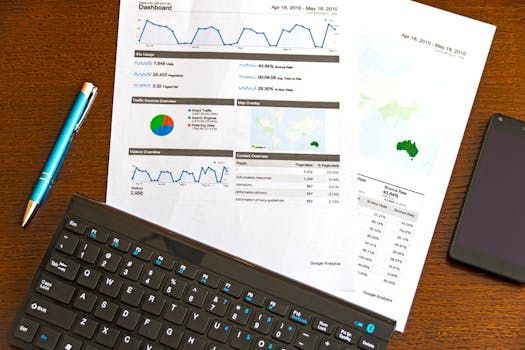
Email marketing remains one of the most effective and cost-efficient digital marketing channels available to St. Louis businesses, delivering an average return of $42 for every dollar invested. Unlike social media platforms where algorithms control reach or paid advertising where costs continue rising, email marketing provides direct access to customers who have explicitly expressed interest in your business by sharing their contact information.
The power of email marketing lies in its ability to nurture relationships over time while providing measurable results that directly impact business growth. From welcome sequences that introduce new subscribers to your brand to automated campaigns that re-engage dormant customers, strategic email marketing helps St. Louis businesses build lasting customer relationships while driving consistent revenue throughout the year.
Success with email marketing requires understanding your audience, crafting compelling content, and implementing strategic automation that delivers the right message to the right person at the right time. Whether you're a local retailer looking to drive repeat purchases or a service provider seeking to nurture leads through your sales process, email marketing provides the tools and insights needed to accelerate business growth while building stronger customer connections.
1. Building High-Quality Email Lists
List building forms the foundation of successful email marketing, with quality subscribers who genuinely want to hear from your business generating significantly better results than large lists of unengaged contacts. Effective list building strategies focus on attracting people who are already interested in your products or services rather than simply collecting as many email addresses as possible. St. Louis businesses benefit from targeting local audiences who are more likely to become customers and provide referrals within their community networks.
Lead magnets provide valuable incentives for potential subscribers to share their email addresses, offering immediate value in exchange for contact information. Effective lead magnets include downloadable guides, exclusive discounts, free consultations, or access to valuable resources that solve specific problems for your target audience. Local businesses can create location-specific lead magnets such as "Ultimate Guide to St. Louis Neighborhoods" or "Insider's Guide to Local Events" that appeal specifically to area residents.
Opt-in form optimization ensures that signup opportunities are prominent, compelling, and easy to complete across all customer touchpoints. This includes website forms, social media campaigns, in-store signup opportunities, and event-based collection strategies that capture interested prospects at various stages of their customer journey. Strategic form placement and compelling copy significantly impact subscription rates while ensuring that new subscribers understand what they'll receive and how often.

Permission-based marketing ensures compliance with regulations while building trust with subscribers who have explicitly chosen to receive communications from your business. This approach generates higher engagement rates and better business results than purchased lists or aggressive collection tactics that often result in spam complaints and poor deliverability. Focusing on permission-based growth creates sustainable email marketing programs that support long-term business objectives.
2. Email Design and Content Strategy
Mobile-first email design ensures that messages display properly and function effectively on smartphones and tablets, which account for over 60% of email opens. Responsive design adapts email layouts to different screen sizes while maintaining readability and functionality across all devices. St. Louis businesses must prioritize mobile optimization since many customers check email on their phones throughout the day, including while commuting, shopping, or researching local services.
Visual hierarchy guides readers through email content using strategic placement of headlines, images, and calls-to-action that create clear reading paths and encourage desired actions. Effective email design balances text and visual elements while maintaining brand consistency that reinforces business identity and professional standards. Local businesses can incorporate St. Louis imagery, landmarks, or seasonal references that create emotional connections with area subscribers.
Content personalization goes beyond using subscriber names to include relevant product recommendations, location-based offers, and behavior-triggered messaging that makes each email feel customized for individual recipients. Advanced personalization uses purchase history, browsing behavior, and demographic data to deliver highly relevant content that increases engagement and conversion rates. This targeted approach helps St. Louis businesses compete with larger companies by providing personal attention that customers value.
Subject line optimization significantly impacts email open rates, with compelling subject lines that create curiosity, urgency, or clear value propositions generating higher engagement than generic or overly promotional alternatives. Testing different subject line approaches helps identify what resonates with specific audiences while avoiding spam filters that can prevent email delivery. Local businesses can reference St. Louis events, weather, or cultural touchpoints that create immediate relevance for area subscribers.
3. Automation and Segmentation
Welcome email sequences introduce new subscribers to your business while setting expectations for future communications and guiding initial engagement with your products or services. Effective welcome sequences provide immediate value, share brand story elements, and encourage specific actions that move subscribers deeper into your sales process. Multi-part welcome series often generate higher engagement and conversion rates than single welcome emails by providing multiple opportunities to connect and demonstrate value.
Behavioral automation triggers specific email campaigns based on subscriber actions such as website visits, purchase history, or engagement patterns that indicate interest or buying intent. This automated approach ensures timely, relevant communication without requiring manual intervention while providing personalized experiences that feel responsive to individual customer needs. Examples include abandoned cart reminders, post-purchase follow-ups, and re-engagement campaigns for inactive subscribers.
Segmentation strategies divide email lists into smaller groups based on demographics, behavior, interests, or engagement levels that allow for more targeted messaging and improved campaign performance. Effective segmentation might include geographic location, purchase history, engagement frequency, or customer lifecycle stage that enables customized content and offers. St. Louis businesses can segment by neighborhood, local interests, or seasonal preferences that create more relevant and engaging email experiences.

Lifecycle marketing aligns email content with different stages of the customer journey, from initial awareness through purchase and post-sale support that maximizes customer lifetime value. This strategic approach ensures that subscribers receive appropriate messaging based on their relationship with your business while identifying opportunities to deepen engagement and encourage repeat purchases. Lifecycle campaigns often generate higher ROI than broadcast campaigns by delivering more relevant content at optimal timing.
4. Performance Tracking and Analytics
Key performance indicators include open rates, click-through rates, conversion rates, and unsubscribe rates that provide insights into campaign effectiveness and subscriber engagement. Regular monitoring of these metrics helps identify successful strategies that should be expanded and areas needing improvement or adjustment. Understanding which metrics matter most for specific business goals ensures that optimization efforts focus on activities that drive meaningful results.
A/B testing systematically compares different email elements such as subject lines, content formats, send times, and calls-to-action to identify what generates the best results for specific audiences. Testing should focus on one variable at a time to ensure clear insights about what influences subscriber behavior. Continuous testing and optimization help St. Louis businesses refine their messaging while improving campaign performance and reducing costs over time.
Deliverability monitoring ensures that emails reach subscriber inboxes rather than spam folders, with factors including sender reputation, content quality, and list hygiene affecting delivery rates. Poor deliverability can significantly impact campaign effectiveness while damaging sender reputation for future campaigns. Regular monitoring and optimization of deliverability factors helps maintain high inbox placement rates that maximize email marketing ROI.
Revenue attribution connects email marketing activities to actual sales and business results, helping justify marketing investments while identifying the most valuable campaigns and strategies. This includes tracking both immediate conversions and longer-term customer value that results from email engagement. Accurate attribution helps St. Louis businesses understand the true impact of email marketing while optimizing budget allocation across different marketing channels.
5. Compliance and Best Practices
Legal compliance includes following CAN-SPAM Act requirements, GDPR regulations, and other privacy laws that govern email marketing practices. This includes providing clear unsubscribe options, including business contact information, and obtaining proper consent for email communications. Compliance violations can result in significant penalties while damaging business reputation and customer trust. Understanding and following applicable regulations protects businesses while demonstrating respect for subscriber preferences.
List hygiene involves regularly cleaning email lists by removing inactive subscribers, bounced addresses, and unengaged contacts that can harm deliverability and campaign performance. While removing subscribers may reduce list size, focusing on engaged audiences typically generates better results and lower costs than maintaining large lists of inactive contacts. Regular list cleaning helps maintain sender reputation while improving campaign metrics and ROI.
Frequency optimization balances staying top-of-mind with avoiding subscriber fatigue that leads to unsubscribes or spam complaints. The optimal email frequency varies by business type, audience preferences, and content quality, making testing and monitoring essential for finding the right balance. Local businesses often benefit from consistent but not overwhelming communication that maintains engagement without becoming intrusive.
Privacy protection involves safeguarding subscriber data while being transparent about how information is collected, stored, and used for marketing purposes. This includes secure data storage, limited access to subscriber information, and clear privacy policies that explain data handling practices. Strong privacy practices build subscriber trust while protecting businesses from data breaches and regulatory violations that can damage reputation and result in significant costs.
6. Local Business Strategies
Community-focused content leverages St. Louis events, news, and cultural references that create emotional connections with local subscribers while positioning your business as an integral part of the community. This might include content about local festivals, sports teams, seasonal activities, or neighborhood developments that resonate with area residents. Community content helps differentiate local businesses from national competitors while building stronger customer relationships through shared local experiences.
Event-based campaigns capitalize on local happenings such as Cardinals games, Forest Park events, or neighborhood festivals that create timely marketing opportunities. These campaigns can promote special offers, highlight business participation in community events, or simply acknowledge shared local experiences that strengthen customer relationships. Event-based marketing demonstrates community involvement while providing natural conversation starters that feel relevant and engaging.
Partnership opportunities with other St. Louis businesses can expand email reach while providing mutual benefits through cross-promotion and shared marketing efforts. Collaborative campaigns might include joint promotions, event partnerships, or complementary service offerings that provide additional value to subscribers. Strategic partnerships help local businesses leverage each other's customer bases while strengthening community business relationships.
Seasonal personalization adapts email content to St. Louis weather patterns, local traditions, and regional preferences that create more relevant and engaging subscriber experiences. This includes adjusting product recommendations, promotional timing, and content themes to align with local seasonal patterns and cultural events. Seasonal personalization helps emails feel more timely and relevant while demonstrating understanding of local customer needs and preferences.
7. Integration with Other Marketing Channels
Social media integration connects email marketing with social platforms to expand reach while creating consistent messaging across multiple customer touchpoints. This includes promoting email signups through social channels, sharing email content on social platforms, and using social insights to inform email segmentation and personalization strategies. Integrated approaches help St. Louis businesses maximize their marketing impact while maintaining consistent brand messaging.
Website integration ensures seamless connections between email campaigns and website experiences, with email content driving traffic to specific landing pages optimized for conversion. This includes coordinating email campaigns with website promotions, using email to drive traffic to new website content, and ensuring consistent messaging and design across all digital touchpoints. Strong integration improves user experience while maximizing conversion opportunities.
Customer relationship management (CRM) integration synchronizes email marketing with sales processes and customer service activities, ensuring consistent communication and improved customer experiences throughout the entire business relationship. CRM integration enables more sophisticated automation and personalization while providing sales teams with valuable insights about customer engagement and preferences. This coordination helps St. Louis businesses provide seamless customer experiences that build loyalty and drive repeat business.
Analytics integration combines email performance data with other marketing metrics to provide comprehensive insights into customer behavior and campaign effectiveness across all channels. This holistic view helps identify which marketing activities work best together while optimizing budget allocation and strategy development. Integrated analytics enable more informed decision-making while maximizing overall marketing ROI.
Conclusion
Email marketing success requires strategic planning, consistent execution, and ongoing optimization that aligns with business goals while serving subscriber needs and preferences. St. Louis businesses that implement comprehensive email marketing strategies position themselves for sustained growth while building stronger customer relationships that drive repeat business and referrals. From list building to automation, each element of email marketing contributes to overall business success and customer satisfaction.
Professional email marketing management delivers superior results through expert strategy development, compelling content creation, advanced automation setup, and continuous optimization based on performance data. Whether you're launching your first email campaigns or improving existing efforts, partnering with experienced professionals ensures that email marketing investments generate positive returns while avoiding common mistakes that waste resources and limit growth potential.
At Yeppy Marketing Agency, we help St. Louis businesses harness the power of email marketing to nurture customer relationships, drive sales, and accelerate growth through strategic campaign development and management. Our local expertise and proven track record help businesses achieve their email marketing goals while building sustainable competitive advantages that support long-term success and customer loyalty.
Ready to transform your email marketing into a powerful business growth engine? Contact our team today to discuss how we can help your St. Louis business succeed through strategic email marketing that builds relationships, drives engagement, and generates measurable results for your bottom line.


